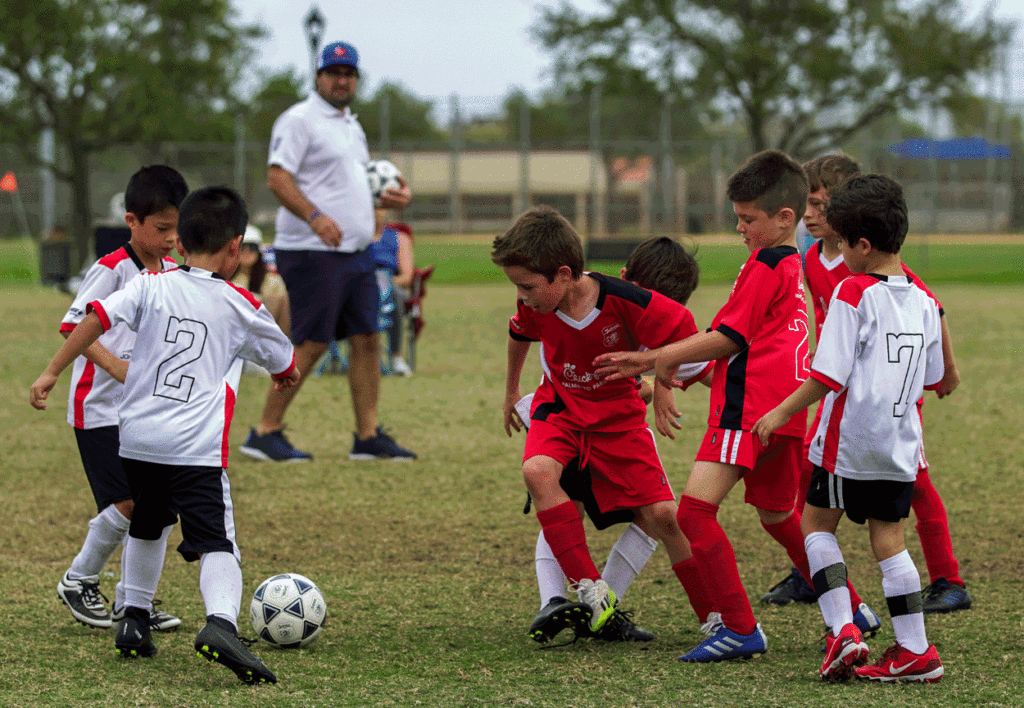The Soccer Association of Boca Raton (SABR) is committed to player development for its membership.
One of the keys to providing that is by using the Play-Practice-Play (P-P-P) model, which was developed by the U.S. Soccer Federation and adopted by SABR in 2018. The Play-Practice-Play model simply means we start and end the youth soccer training with playing the game. SABR held clinics for coaches at Spanish River Athletic Complex on Sept. 27-28 for 118 coaches and 2 more coming up on October 4-5.
Player development is at the heart of SABR’s mission as we strive to be a ‘total’ club dedicated to every member of our community. Whether it is a player just starting or players who strive for higher levels of competition, they can find it in our club.
“We are so fortunate,” said Carrie Barker, Director of Coaching and Player Development for SABR since 2021. “Our club is quite large, and we hold a coaches clinics to help grassroots parent volunteers become better coaches and provide appropriate training to their players.”
SABR aims to maximize each player’s potential across various ages and stages. Games are played according to the principles of small-sided games for these younger age groups:
Under 5 – Under 8: 4 v 4 games
Under 9 – Under 10: 7 v 7 games
Under 11 – Under 12: 9 v 9 games.
Under 13 – Under 19: 11 v 11 (full-sided)
Exercises for soccer – Play-Practice-Play
Players arrive at soccer practice and jump right into a fun, small-sided game to get moving. Typically, players in the youngest age groups will ask during the session, “When are we going to scrimmage?” This gives them the opportunity in a low-pressure environment.
“We encourage our coaches to use Play-Practice-Play (PPP) for youth soccer lessons because it creates an engaging, successful, and player-centered learning environment,” Barker explained. “The first ‘Play’ phase is small game-like activities that replicate real competition (i.e., 3v3,4v4, or 5v5). This helps players understand how skills apply to the real game.
“The ‘Practice’ phase involves structured activities to target specific skills or tactics,” she continued. “It allows coaches to break down complex skills such as dribbling and soccer ball control. The second ‘Play’ Phase is the game. This game-like setting is where players apply the skills practiced.”
Age Appropriate training
Through the pre-season coaching clinics by age groups, SABR coaches learn structured soccer drills for 4-5 year olds through 8-9-year-olds – and all the way up to soccer drills for 10-12-year-olds. What is taught in the younger age groups doesn’t necessarily translate to the larger, more complex 11v11 games, but it gets the youngest players started with a solid technical skills foundation.
Small-Sided Games (SSG)
Small-sided games are soccer with fewer players on a smaller field—like 3v3, 4v4, or 7v7. For children, that means more touches on the ball, more decisions to make, and more opportunities to be part of the action.
“Small-sided games get everyone involved,” Barker added. “It’s fun. It’s high energy and keeps players motivated.”
Instead of standing around on a big field, every player is constantly involved. It’s more fun, more exciting, and it builds confidence faster. That’s why U.S. Soccer and SABR use small-sided games as the best way to learn.
SABR also provides free access to the Soccer Parent Resource Center, with hundreds of articles, interviews, and courses designed specifically for youth soccer parents and coaches to enhance their child’s soccer experience. Instructors as well as lesson plans for coaches.
Key differences between small-sided and full-sided games
The most notable difference is the size of the field and the number of players on the field. Parents and coaches of youth soccer players ages 8-18 years old help guide the players throughout the transition from small-sided to full-sided games. They are taught the fundamentals of the game, from basic skills to problem-solving.
As the players get older, the tactical complexities change. Players learn formations and positions – goalkeeper, defenders, midfielders, and forwards.
Parent coach resources
We provide pre-season clinics, lesson plans for practice nights, and Carrie Barker, our Director of Coaching and Player Development, is on the fields on practice nights and at games to help our grassroots parents raise their game. (Click here for her bio) .
With her guidance, our coaches have access to even more sources so they excel for their players. Here are a couple examples:
